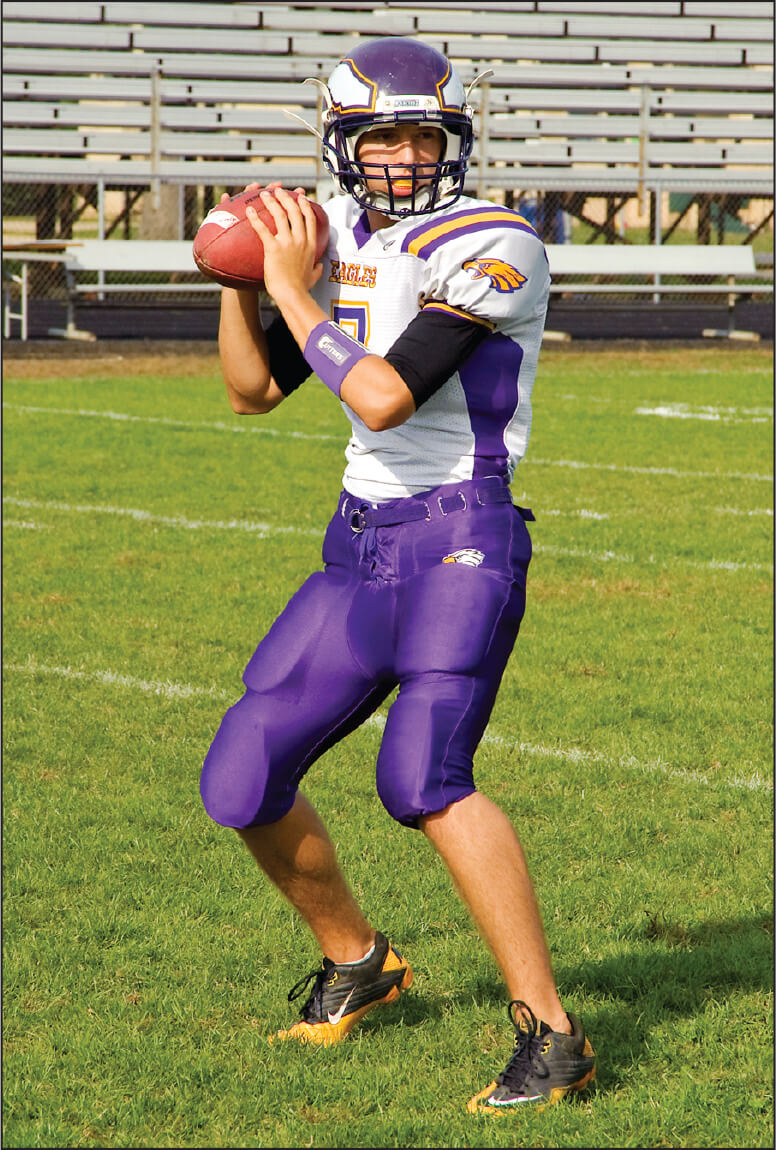Five- and Seven-Step Drops
This is an excerpt from Football Skills & Drills - 2nd Edition by Tom Bass.
A quarterback needs a five- or seven-step drop for medium and deep pass routes, or pass patterns run beyond 5 yards. As a rule, the deeper the pattern that the receiver runs, the deeper the quarterback’s drop should be.
The quarterback’s goal on any pass play is to deliver the ball to the receiver on time and at the point in the receiver’s pattern at which the receiver has the best opportunity to make the catch. The quarterback needs to have disciplined drops if his timing is to be correct.
For both the five- and seven-step drops (figure 2.17), the quarterback takes both the first step away from the line of scrimmage and the last step with the foot on the same side as his passing hand. He follows his first step with a crossover step. He continues the drop by alternating feet until he has taken the appropriate number of steps.

The quarterback should use a five-step drop on all medium pass routes: in, out, hook, cross, delay, quick post, and deep up. When he takes the final step in the drop, he should be nearly 7 yards from the line of scrimmage.
When a receiver is running an out pattern, the quarterback should expect him to make his break toward the sideline at 12 yards. When the quarterback takes the final step, he immediately starts the throwing motion by stepping with his front foot at a point 9 yards directly in front of the receiver’s path. This amount of space is what the receiver normally covers while the ball is in the air.
The up pattern is a deep pass pattern but is thrown from a five-step drop. The quarterback must be prepared to throw the ball the minute that the receiver moves up the field and gets even with the defensive back, usually at 12 yards. The quarterback should throw the pass 10 yards in front of the receiver and 5 yards to his inside so that the receiver has a chance to run directly under the pass to make the catch.
The seven-step drop should be used for deep pass routes, such as post, corner, and comeback. The seventh step of the drop should take the quarterback 9 yards away from the line of scrimmage as he sets up.
Throwing a corner route requires the quarterback to take a full seven-step drop. He must be prepared to lead the receiver with the ball toward the corner of the field on the sideline. In a post pattern, after the receiver starts toward the center of the field at 10 yards, he quickly breaks to the outside to the corner of the field. The quarterback must anticipate this path change and be ready to step and throw the ball 12 yards in front of the receiver’s path. Ideally he throws the ball in front of and to the outside shoulder of the receiver.
On both of these drops, the quarterback sprints away from the line of scrimmage at a much greater speed than he does in the three-step drop. Because of this speed, the final step, the plant step, is crucial (figure 2.18). The quarterback extends the final step, unless he is on a wet or loose field, to stop his momentum away from the line of scrimmage. Then he gets in position to set up for his delivery. When on a wet or loose field, the quarterback shortens the plant step and keeps his feet under him to keep from slipping on the plant step or just as he tries to throw the ball.

After the quarterback stops his momentum away from the line of scrimmage, he brings his front foot back slightly so that he can plant both feet under his hips and get in position to begin the throw. The quarterback is in perfect position to step to any area of the playing field to deliver the pass. He holds the ball securely with both hands at chest height. He gathers his body and stands tall with both feet under his hips, and he then begins the passing motion.
More Excerpts From Football Skills & Drills - 2nd EditionSHOP

Get the latest insights with regular newsletters, plus periodic product information and special insider offers.
JOIN NOW


